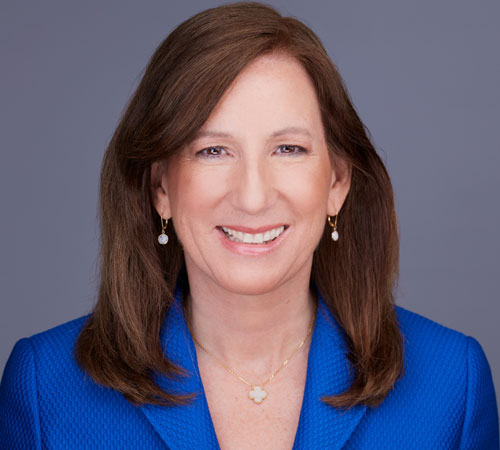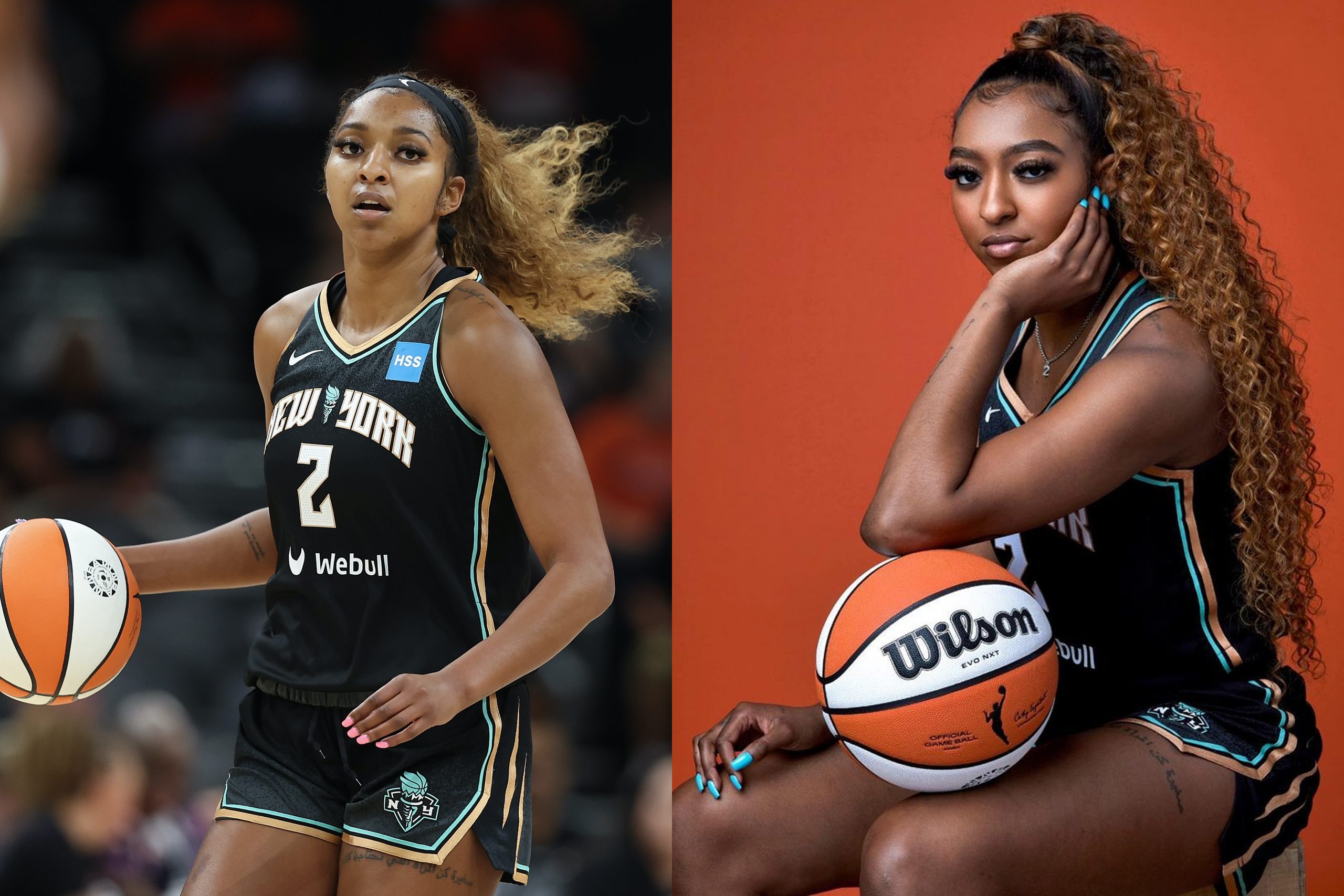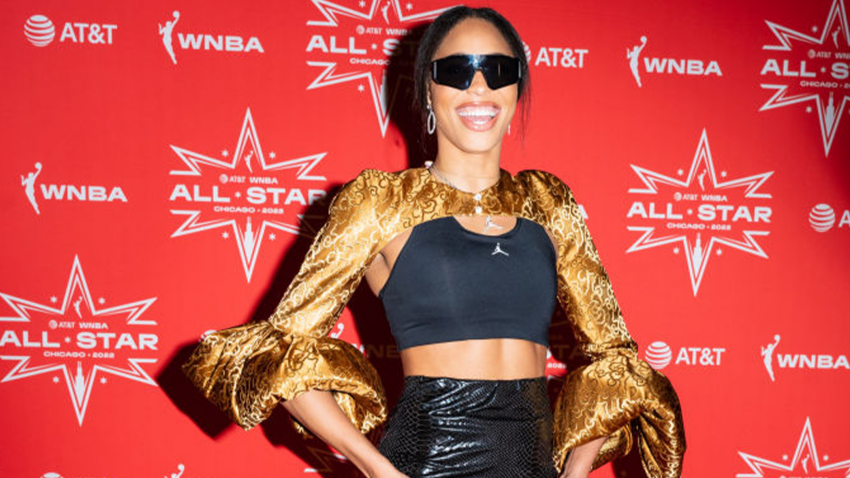The W in Designer: The Rise of Playa Society with Esther Wallace

Built with authenticity, Playa Society offers basketball fans a new way to pay homage to their favorite female players.
Transforming the league’s favorite faces into stylish, sketched designs, Playa Society is frequently worn by both players and fans. The brand’s t-shirts are easily recognized with their signature placement of enlarged athletic fonts, color gradient prints, and sketched portraits of players like Sylvia Fowles and Candace Parker. Founded by Esther Wallace, Playa Society creates apparel that celebrates women in sports with a distinct, contemporary style.
Over the last five years, Playa Society has grown from a one-woman operation to a bona fide business that can help support other small businesses. While the brand’s eye-catching slogan t-shirts have always aimed to make a statement larger than a single sport, its most recent release goes back to Wallace’s roots as a player and an entrepreneur. Within the Playa Society x WNBA “Black history Every Game” release, she aims to respond to the current moment instead of focusing on the lack of women’s basketball merchandise.

Even in the earliest days of building her brand, Wallace knew she wanted to get WNBA players on t-shirts. “But, I wanted to do it differently than what might already exist or what things might exist on the men’s side,” explains Wallace, “I was thinking to myself like, ‘how can I make it a little bit different and more unique?'” Driven by her desire for authenticity, Wallace uses her on-court experience to figure out designs that players will love to wear and that the fans can rock while celebrating their favorite athletes.
Announcing new drops across Instagram and Twitter, Playa Society’s apparel is notorious for quickly selling out, proving a strong demand for merchandise highlighting women’s basketball. Spotting a Playa Society piece in the wild is a way to spot another fan of the W; “We want people to feel like it’s uniform, and if you’re wearing Playa Society, we’re all on the same team,” says Wallace. Speaking to Wallace earlier this month, this interview explores how playing basketball informs her approach to sketching new designs and growing her business.

Kirsten Chen: Where does the name Playa Society come from?
Esther Wallace: When I started, the only thing I knew for certain was that I wanted to create something that would benefit players– all women, across all sports– and the ethos of this brand to be players first. I also wanted it to feel like something that was communal and belonged to the community of players, fans, and more and us. So, ‘society’ is rooted in that community vibe, then I was also influenced by the line from Love and Basketball, where Monica says, “cause I’m a ball player.”
KC: Tell me more about your relationship with fashion while growing up.
EW: Fashion and design came way before basketball. I probably started drawing and sketching in elementary school, and by the 5th grade, I knew I wanted to be in the world of fashion, whether as a designer or to work for a big design company. I had a sketchbook full of dresses, different looks, designs, and sketches throughout elementary school. I’d walk around with it and draw all the time.
KC: Was there a specific moment when you realized the connection between basketball and fashion?
EW: I think the moment came in college when one of my assistant coaches was looking through the catalogs. She was looking to choose our travel gear and sneakers for the season. She had two catalogs on her desk; one said women’s basketball, and the other said basketball, so I remember having a conversation with her like, ‘Why is there a difference? Why doesn’t it say men’s basketball and women’s basketball?’ Having that conversation was initially what made me think about the world of apparel and fashion as it relates to sports, as it relates to basketball, as it relates to women, and all of those things.

KC: Moving to your t-shirts, especially those with multiple portraits of A’ja Wilson or Candace Parker, can you describe the process of creating those designs?
EW: Probably like October of 2021 was when I was thinking about it. I started drawing on an iPad for the first time in November 2021. I had to teach myself how to use the iPad and sketch in that way. It was really like an early trial and error. I was perfecting– I think I started with the Candace Parker portrait, and I must have drawn it at least 20 times. It took a while for me to be satisfied and say, ‘This finally looks really good. This looks like Candace; now let’s see if we can get it onto a t-shirt.’ Then, it came like sampling and working with production to get it onto a t-shirt in a way that would still look like the sketch itself.
KC: What kind of music do you listen to while you’re working on your clothing designs?
EW: It depends. If I’m in the concept phase, like still trying to figure out what exactly I wanna create, I literally have to be in complete silence. I can’t have any noise at all. But, um, if I’m in the execution phase and I know that I’m sketching Candace Parker or Sylvia Fowles, then I have to have background noise. I still only listen to music from the ’90s or the early 2000s, a lot of rap music from those times. Or I’ll throw on Netflix and have something that’s not a distraction playing in the background.
KC: When you’re in the conceptualization phase, where do you get inspiration for your brand? Is it more basketball-related media or streetwear and fashion?
EW: It’s a little bit of everything. I try to consume as much as I can from music, sports, basketball, and from the athletes themselves. When I feel locked in, it usually comes from the personal connection I can make to one of those areas. I’m a firm believer that it’s really just tapping into the experiences and authenticity that already exist and not necessarily looking outside of those places right now.

KC: What’s the most challenging part of being an entrepreneur and running your own brand?
EW: Working in this space, with apparel and product, is really, really hard. The most challenging thing is just time. It always seems like there’s never time to put out all the things that we want to do. When I started working with the WNBA, Playa Society was a team of one, and it was just me. Now we’re a team with two full-time people and one part-time person and growing. But, it’s a matter of how much time I have to design and allocate toward growing the business. That’s a big challenge, building a team and doing it sustainably in a way where we can keep up with it.
KC: Looking to the future, what do you think needs to happen for WNBA merchandise to become as mainstream as other sports merchandise?
EW: For us as a brand, we’re still trying to get our feet under us as far as making sure the supply chain goes right. I think what needs to happen for WNBA merch is for there to be more accessibility and availability so that it ties directly to the supply chain.
And I think there needs to be more people in women’s sports– like if we take notes from what’s happening in women’s sports media, right? You see more women creating their own platforms to talk about women’s sports. I think similarly in the merch world, and Playa Society creates the platform and opportunity to create products for women’s sports. And supply chain is a big piece of that. You can only kind of create what you have access to create.

KC: While building your brand for the last five years, was there a moment when you were starstruck or realized how big Playa Society has grown?
It happens all the time, I spend so much time with my head down on the computer or in my sketchbook, and I feel like I don’t always get to, like, look up and actually see what’s going on. Obviously when Candace Parker wore the female athlete t-shirt, which was the first thing that ever happened for Playa Society during year one. That was huge.
And this past year, when we went to WNBA All-Star, and we sold out in Chicago after planning a popup in five days. Also, I was on the court when the All-Star game ended. After having such a phenomenal final All-Star game and dunking, Sylvia Fowles saw me and immediately came up to me, hugged me, and said thank you for making her retirement t-shirt. That’s when I felt like, ‘Wow, we really are doing the work, and the players appreciated it,’ so we’re basically fulfilling the brand’s purpose.
When is your restock happening?
We just restocked our Black History Month t-shirt and are planning some completely new designs for the upcoming WNBA season. We’ll have some college things coming out in March– a popup during the Final Four–to bridge further the gap between women’s college basketball and the WNBA as well.
WNBA reporter Kirsten Chen writes a lifestyle & fashion column on WNBA.com throughout the season and can be reached on Twitter through @hotgothwriter. The views on this page do not necessarily reflect the views of the WNBA or its clubs.




,xPosition=.5,yPosition=.5)
,xPosition=.5,yPosition=.5)
,xPosition=.5,yPosition=.5)
,xPosition=.5,yPosition=.5)